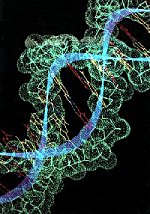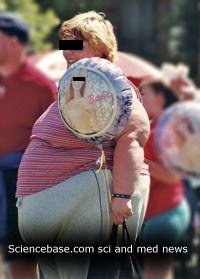 When I was a youngster I used to do a spot of sea fishing on the freezing cold north east coast. It wasn’t so much a hobby as an obsession at one point. Key to success was a plentiful supply of lugworm which could be dug from the wet golden sand at lowtide and stored ready for the next angling venture, while ragworm, which have a nasty bite, came from the local fishing bait supplier. Never would it have occurred to my 11-year old self that these lowly creatures could harbour the secrets of our own evolution.
When I was a youngster I used to do a spot of sea fishing on the freezing cold north east coast. It wasn’t so much a hobby as an obsession at one point. Key to success was a plentiful supply of lugworm which could be dug from the wet golden sand at lowtide and stored ready for the next angling venture, while ragworm, which have a nasty bite, came from the local fishing bait supplier. Never would it have occurred to my 11-year old self that these lowly creatures could harbour the secrets of our own evolution.
However, apparently it does. Detlev Arendt of the European Molecular Biology Laboratory has been studying the multifunctional neurones that sense the environment and release hormones in vertebrates (including ourselves), flies, and worms. The last common ancestor of all of these creatures must provide the evolutionary basis of our modern brains that endow us with the skills to varying degrees of success to dig up ragworm, take part in fishing trips, and ponder our origins.
Hormones control growth, metabolism, reproduction and other biological processes. In humans, as indeed in all vertebrates, the chemical signals are produced by the hypothalamus and other specialist brain centres and secreted into the blood for circulation around the body. This signalling system is not, it turns out, the preserve of those creatures with a backbone. Arendt and his colleagues now believe that the hypothalamus and its hormones have their evolutionary origins in an ancient worm-like creature that lived hundreds of millions of years ago and is the common ancestor of vertebrates, flies, and worms.
Hormones work slowly, on the whole, and have body-wide effects. Insects and nematode worms use hormones, but the specific molecules they use are very different from their vertebrate counterparts.
“This suggested that hormone-secreting brain centres arose after the evolution of vertebrates and invertebrates had split,” explains Arendt, “But then found vertebrate—type hormones in annelid worms and molluscs, indicating that these centres might be much older than expected.” Comparisons of two types of hormone-secreting nerve cells from zebrafish, a vertebrate, and the annelid worm Platynereis dumerilii, in Arendt’s lab have now revealed some stunning similarities that point to a shared and ancient ancestry for our hormonal systems.
“These findings revolutionise the way we see the brain,” says Kristin Tessmar-Raible who carried out the comparison, “So far we have always understood it as a processing unit, a bit like a computer that integrates and interprets incoming sensory information. Now we know that the brain is itself a sensory organ and has been so since very ancient times.” The research appears in detail in the journal Cell.
Bewildering to think that I used to skewer these little creatures on a barbed hook and cast them into the sea to catch scaly marine creatures. It almost makes no sense.
 Sciencebase was recently invited to join the excellent DNA Network and as such our genetics news feed is now being pulled by the network’s feed system. If I had been a little slower off the mark, I could have been site number twenty in the list, but when I joined I think I jumped in at #18. There are, at the time of writing, nineteen members, no DNAying it.
Sciencebase was recently invited to join the excellent DNA Network and as such our genetics news feed is now being pulled by the network’s feed system. If I had been a little slower off the mark, I could have been site number twenty in the list, but when I joined I think I jumped in at #18. There are, at the time of writing, nineteen members, no DNAying it. The budget for the Human Genome Project and all that post-genomic, proteomic, metabonomic, immunomic…research was almost on a par with defense spending; it was almost c-omical really. Well, maybe not quite, but it stretches out with a lot of zeros nevertheless. At the time the grants were written and the funding given, we, as a society, were promised all kinds of medical miracles from gene therapies and new treatments to cure all those nasties – cystic fibrosis, sickle cell, thalassemia, cancer, heart disease and more.
The budget for the Human Genome Project and all that post-genomic, proteomic, metabonomic, immunomic…research was almost on a par with defense spending; it was almost c-omical really. Well, maybe not quite, but it stretches out with a lot of zeros nevertheless. At the time the grants were written and the funding given, we, as a society, were promised all kinds of medical miracles from gene therapies and new treatments to cure all those nasties – cystic fibrosis, sickle cell, thalassemia, cancer, heart disease and more. One of the most powerful techniques available to analytical scientists is Raman spectroscopy. Unfortunately, it is not easy to distinguish the low-intensity signals it produces when studying fluorescent species in cells because they are swamped by the much brighter glow from various cell components. Now, Dutch researchers have overcome this incompatibility to hybridize Raman with fluorescence microscopy by exploiting the optical properties of semiconductor fluorescent quantum dots (QDs). They have demonstrated hybrid Raman fluorescence spectral imaging in studies of single cells.
One of the most powerful techniques available to analytical scientists is Raman spectroscopy. Unfortunately, it is not easy to distinguish the low-intensity signals it produces when studying fluorescent species in cells because they are swamped by the much brighter glow from various cell components. Now, Dutch researchers have overcome this incompatibility to hybridize Raman with fluorescence microscopy by exploiting the optical properties of semiconductor fluorescent quantum dots (QDs). They have demonstrated hybrid Raman fluorescence spectral imaging in studies of single cells.  I just received an early publication alert from the Australian research organisation CSIRO announcing the imminent publication of volume 19 of their journal on reproductive science, fascinating I thought as I opened the attachment.
I just received an early publication alert from the Australian research organisation CSIRO announcing the imminent publication of volume 19 of their journal on reproductive science, fascinating I thought as I opened the attachment. Today’s claims in the media about the recently discovered obesity gene are at best overwrought and at worst downright dangerous. A vast study involving more than twenty research centres across the UK has allegedly demonstrated that almost one fifth of us carry a variant of the gene known as FTO that predisposes us to obesity or overweight.
Today’s claims in the media about the recently discovered obesity gene are at best overwrought and at worst downright dangerous. A vast study involving more than twenty research centres across the UK has allegedly demonstrated that almost one fifth of us carry a variant of the gene known as FTO that predisposes us to obesity or overweight. Cutting out the French fries, burgers, chips, candy, beer, soda, and other delicious yet largely non-nutritious food and drink from your diet is generally a good idea. One of the reasons, health experts suspect, is that somehow a reduced-calorie diet leads to a longer life. Now, researchers at Imperial College London have looked at a dog’s life and discovered why dietary restriction could lead to a longer life.
Cutting out the French fries, burgers, chips, candy, beer, soda, and other delicious yet largely non-nutritious food and drink from your diet is generally a good idea. One of the reasons, health experts suspect, is that somehow a reduced-calorie diet leads to a longer life. Now, researchers at Imperial College London have looked at a dog’s life and discovered why dietary restriction could lead to a longer life. Here’s a puzzle. If evolution ensures that ‘good’ genes spread through a population, then why are individuals so different? Why don’t people get better and better looking through each generation to the detriment of ugliness and lead to a population of real lookers?
Here’s a puzzle. If evolution ensures that ‘good’ genes spread through a population, then why are individuals so different? Why don’t people get better and better looking through each generation to the detriment of ugliness and lead to a population of real lookers? Researchers have developed several tools to help them exploit the underlying chemistry of genomics, while novel chemistry has enabled faster, parallel sequencing methods that not only accelerate genomic research but also cut costs. The very same techniques allow sex chromosomes and complete genomes to be decoded faster and more cheaply than ever before.
Researchers have developed several tools to help them exploit the underlying chemistry of genomics, while novel chemistry has enabled faster, parallel sequencing methods that not only accelerate genomic research but also cut costs. The very same techniques allow sex chromosomes and complete genomes to be decoded faster and more cheaply than ever before.